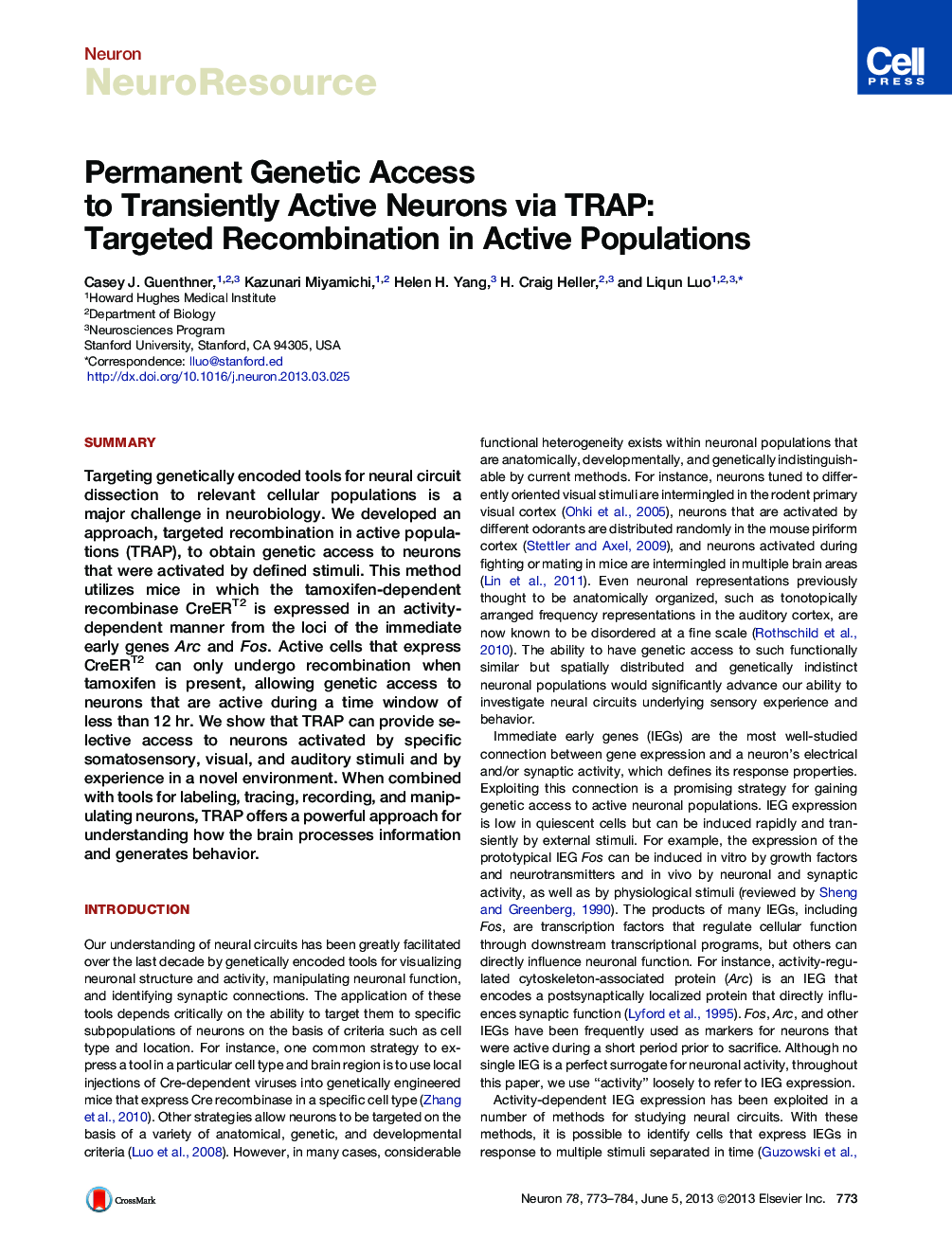| Article ID | Journal | Published Year | Pages | File Type |
|---|---|---|---|---|
| 4321338 | Neuron | 2013 | 12 Pages |
•FosTRAP and ArcTRAP mice allow genetic access to neurons according to activity•TRAP integrates activity over a period less than 12 hr with low background•TRAPing in sensory systems is dependent upon sensory input and stimulus features•TRAP’s modular design facilitates many applications in neural circuit analysis
SummaryTargeting genetically encoded tools for neural circuit dissection to relevant cellular populations is a major challenge in neurobiology. We developed an approach, targeted recombination in active populations (TRAP), to obtain genetic access to neurons that were activated by defined stimuli. This method utilizes mice in which the tamoxifen-dependent recombinase CreERT2 is expressed in an activity-dependent manner from the loci of the immediate early genes Arc and Fos. Active cells that express CreERT2 can only undergo recombination when tamoxifen is present, allowing genetic access to neurons that are active during a time window of less than 12 hr. We show that TRAP can provide selective access to neurons activated by specific somatosensory, visual, and auditory stimuli and by experience in a novel environment. When combined with tools for labeling, tracing, recording, and manipulating neurons, TRAP offers a powerful approach for understanding how the brain processes information and generates behavior.
